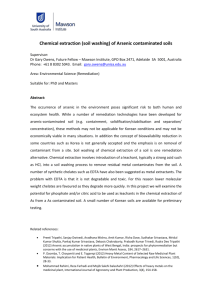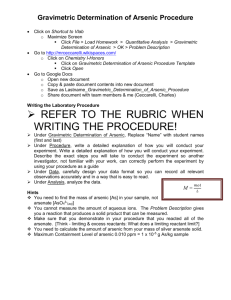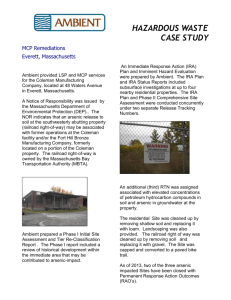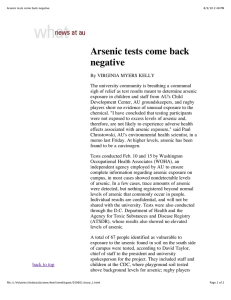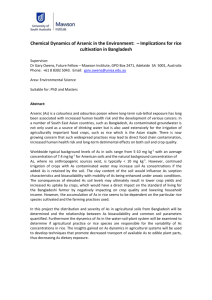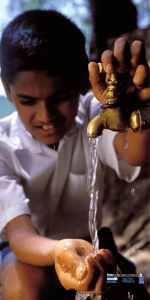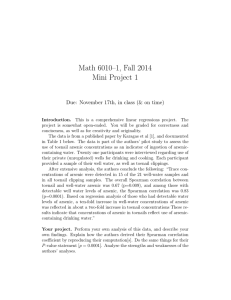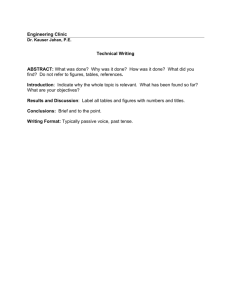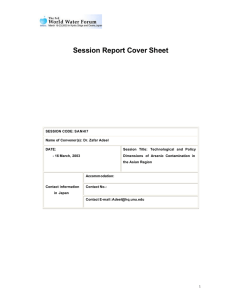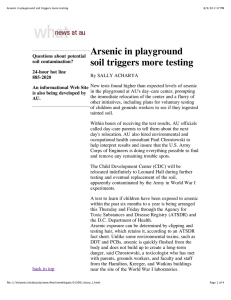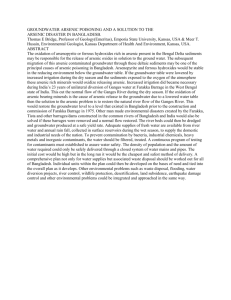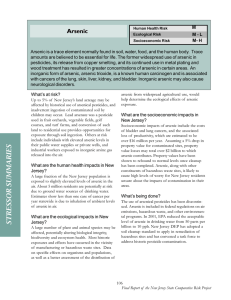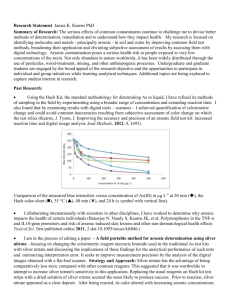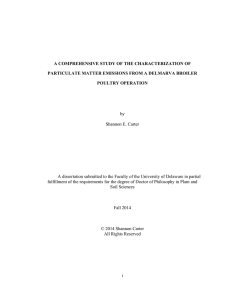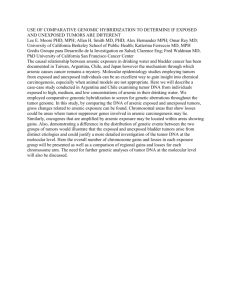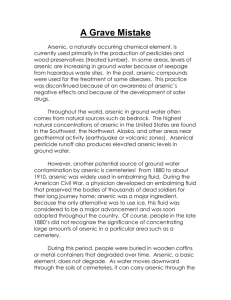Rapid And Inexpensive Method to Determine Arsenic in Water and
advertisement
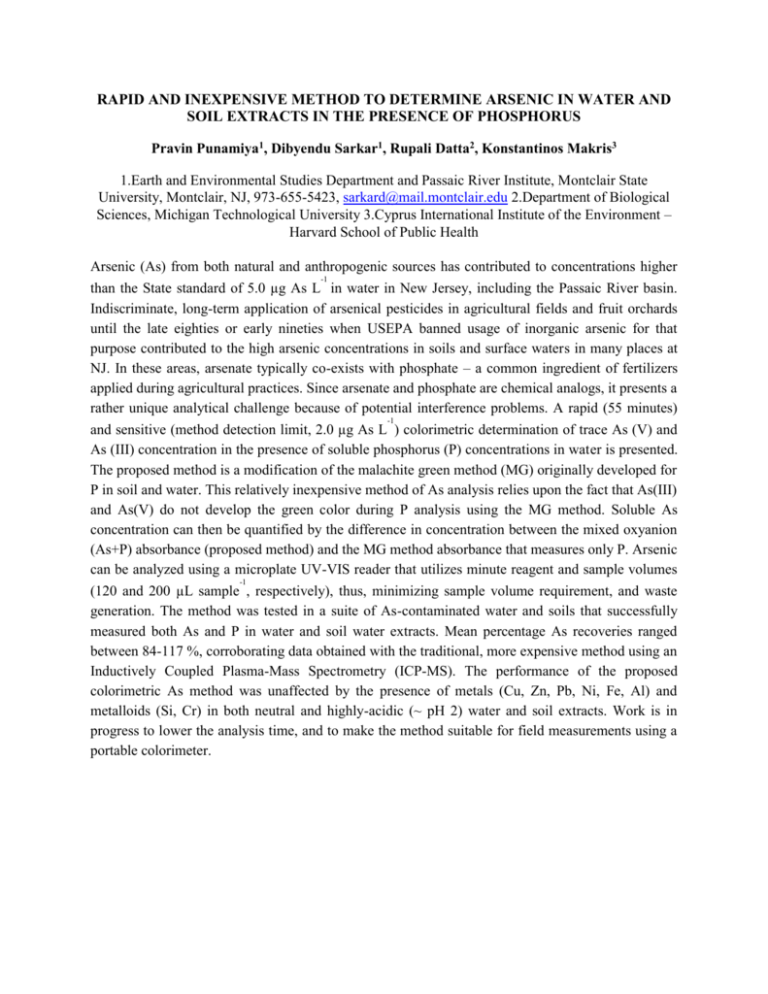
RAPID AND INEXPENSIVE METHOD TO DETERMINE ARSENIC IN WATER AND SOIL EXTRACTS IN THE PRESENCE OF PHOSPHORUS Pravin Punamiya1, Dibyendu Sarkar1, Rupali Datta2, Konstantinos Makris3 1.Earth and Environmental Studies Department and Passaic River Institute, Montclair State University, Montclair, NJ, 973-655-5423, sarkard@mail.montclair.edu 2.Department of Biological Sciences, Michigan Technological University 3.Cyprus International Institute of the Environment – Harvard School of Public Health Arsenic (As) from both natural and anthropogenic sources has contributed to concentrations higher -1 than the State standard of 5.0 µg As L in water in New Jersey, including the Passaic River basin. Indiscriminate, long-term application of arsenical pesticides in agricultural fields and fruit orchards until the late eighties or early nineties when USEPA banned usage of inorganic arsenic for that purpose contributed to the high arsenic concentrations in soils and surface waters in many places at NJ. In these areas, arsenate typically co-exists with phosphate – a common ingredient of fertilizers applied during agricultural practices. Since arsenate and phosphate are chemical analogs, it presents a rather unique analytical challenge because of potential interference problems. A rapid (55 minutes) -1 and sensitive (method detection limit, 2.0 µg As L ) colorimetric determination of trace As (V) and As (III) concentration in the presence of soluble phosphorus (P) concentrations in water is presented. The proposed method is a modification of the malachite green method (MG) originally developed for P in soil and water. This relatively inexpensive method of As analysis relies upon the fact that As(III) and As(V) do not develop the green color during P analysis using the MG method. Soluble As concentration can then be quantified by the difference in concentration between the mixed oxyanion (As+P) absorbance (proposed method) and the MG method absorbance that measures only P. Arsenic can be analyzed using a microplate UV-VIS reader that utilizes minute reagent and sample volumes -1 (120 and 200 µL sample , respectively), thus, minimizing sample volume requirement, and waste generation. The method was tested in a suite of As-contaminated water and soils that successfully measured both As and P in water and soil water extracts. Mean percentage As recoveries ranged between 84-117 %, corroborating data obtained with the traditional, more expensive method using an Inductively Coupled Plasma-Mass Spectrometry (ICP-MS). The performance of the proposed colorimetric As method was unaffected by the presence of metals (Cu, Zn, Pb, Ni, Fe, Al) and metalloids (Si, Cr) in both neutral and highly-acidic (~ pH 2) water and soil extracts. Work is in progress to lower the analysis time, and to make the method suitable for field measurements using a portable colorimeter.





